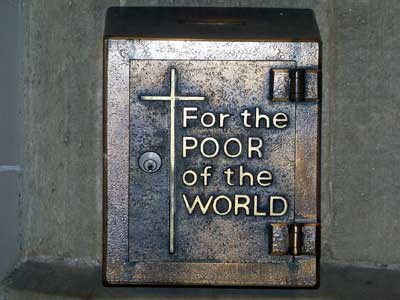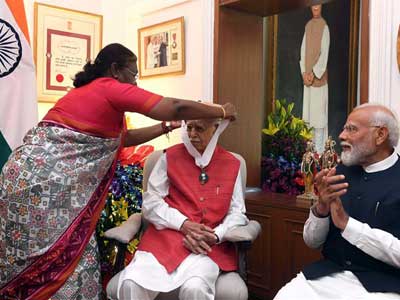India, after attaining independence faced massive challenges. One of the biggest tests the leaders of the time faced was to have a defined boundary of the land whose geographical sense had flowed among the masses through ages. Diana L Eck in her book, India-A Sacred Geography describes this land of Bharata to have been 'enacted ritually in the footsteps of pilgrims for many hundreds of years.' Pt. Jawaharlal Nehru writes about this sense of unity of India as an emotional experience. In Discovery of India, he explains the experience of instilling sense of oneness among the peasants of India, 'I tried to make them think of India as a whole...the task was not easy; yet it was not so difficult as I had imagined, for our ancient epics and myths and legends, which they knew so well, had made them familiar with the conception of their country.'
The task of reconstructing India - territorially and emotionally - was immense. Entire nation was going through a period of mayhem. There were forces at play which wanted a divided nation. The big question for leaders like Mahatma Gandhi at the time of partition was whether there will be two nations once British are gone or 565 different nations. At such a time, responsibility of reconstruction of India fell in the able hands of Iron Man – Sardar Vallabhbhai Patel.
Sardar Patel despite his falling health and age never lost sight of the larger purpose of creating United India. VP Menon who ably assisted Sardar Patel in this enormous task writes in The Story of the integration of the Indian Sates, 'India is one geographical entity. Yet, throughout her long and chequered history, she never achieved political homogeneity... Today, for the first time in the country's history, the writ of a single central Government runs from Kailas to Kanyakumari, from Kathiawar to Kamarupa (the old name of Assam).' Sardar Patel played an instrumental role in creating this India.
Congress had given its assent to the June 3 plan which was about partitioning India into two territories - India and Pakistan. India was then a mosaic of British occupied territory and 565 princely states. The princely states had to choose between joining either of the two nations or remain independent. Few princely states like Travancore, Hyderabad, Junagadh, Bhopal and Kashmir were averse to joining the state of India while others like Gwalior, Bikaner, Baroda, Patiala and others proactively joined India.
Sardar Patel was aware 'you will not have a united India if you do not have a good all-India Service', therefore before embarking on reorganization of states, he build confidence in the 'Steel Frame' or the Indian civil services. Sardar Patel worked tirelessly to build a consensus with the princely states but did not hesitate in employing methods of Sama, Dama, Dand and Bhed where ever necessary. Sardar Patel along with his aide VP Menon designed ‘Standstill Agreements and Instrument of Accession’ accommodating requests and demands from various rulers.
Approach of Sardar Patel and VP Menon was more conciliatory as compared to the approach of Pandit Nehru, who in May 1947, had declared that any princely state that refuses to join the Constituent Assembly would be treated as an enemy state. The official policy statement of the Government of India made by Sardar Patel on July 5, 1947 made no such threats. It reassured the princely states about the Congress' intentions, and invited them to join independent India 'to make laws sitting together as friends than to make treaties as aliens'. He stitched the princely states along with British Indian territory, and prevented balkanization of India.
Sardar Patel was also conscious of the fact that mere political reorganization of this land was not enough. He was aware that the wounded civilization of India needed to be stirred to its core and woken up from the past slavery and misery. There was an urgent need to rekindle among the people of India the bond they shared with their diverse cultures. On November 13, 1947, Sardar Patel, the then deputy Prime Minister of India, vowed to rebuild Somnath Temple. Somnath had been destroyed and built several times in the past and the story of its resurrection from ruins this time would be symbolic of the story of the resurgence of India. The then President of India, Dr. Rajendra Prasad speaking at the inaugural ceremony at the temple said, "It is my view that the reconstruction of the Somnath Temple will be complete on that day when not only a magnificent edifice will arise on this foundation, but the mansion of India's prosperity will be really that prosperity of which the ancient temple of Somnath was a symbol." He added, "The Somnath temple signifies that the power of reconstruction is always greater than the power of destruction."
Sardar Patel played a heroic role in the reconstruction of the Indian civilization, and at a time when Prime Minister Narendra Modi has given a call for 'New India', Patel’s words in a letter to Princely rulers are more relevant than ever, "We are at a momentous stage in the history of India. By common endeavour, we can raise the country to new greatness, while lack of unity will expose us to unexpected calamities. I hope the Indian States will realise fully that if we do not cooperate and work together in the general interest, anarchy and chaos will overwhelm us all great and small, and lead us to total ruin… let it be our proud privilege to leave a legacy of mutually beneficial relationship which would raise this sacred land to its proper place amongst the nations of the world and turn it into an abode of peace and prosperity."
(Author is a Senior Research Fellow at India Foundation. Views expressed in the article are author’s personal.)
















Related Items
Heatwave situation in India is a growing concern
Guide on Butterflies and Moths of India released
TEPA, a modern and ambitious Trade Agreement with EFTA